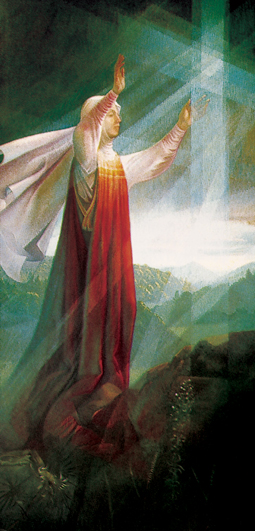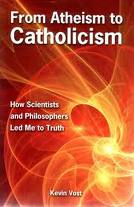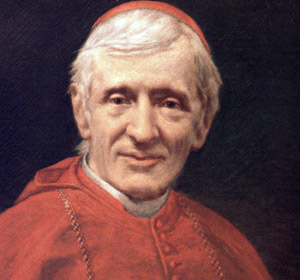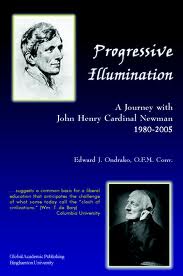Miracles: Healing for a Broken World by Fr. Stefan Starzynski is a heartfelt book where miracles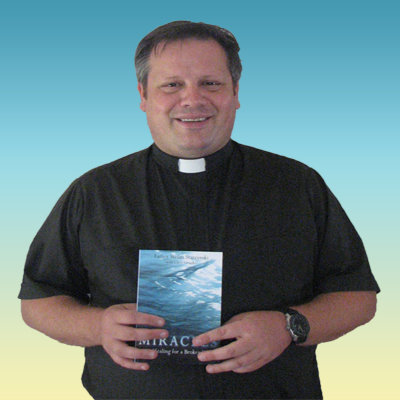 abound beccause of the transforming love of God. I really loved my interview with Fr. Starzynski. He spoke of the beautiful movement of the Holy Spirit so active in the of Church today, all the while remaining firmly anchored in the great heart of Christ and His Church and Sacraments.
abound beccause of the transforming love of God. I really loved my interview with Fr. Starzynski. He spoke of the beautiful movement of the Holy Spirit so active in the of Church today, all the while remaining firmly anchored in the great heart of Christ and His Church and Sacraments.
[powerpress]
You can find Fr. Staryznski’s book here
Tags: catholic, catholic podcast, catholic prayer, cathollc spirituality, Stefan Starzynski
This entry was posted on Monday, October 25th, 2010 at 6:08 am
You can follow any responses to this entry through the RSS 2.0 feed.
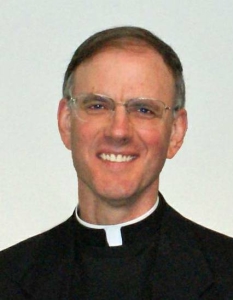 Episode 1 The Discernment of Spirits: Setting the Captives Free – Serves as an introduction to the coming series and the Spiritual Exercises of St. Ignatius of Loyola
Episode 1 The Discernment of Spirits: Setting the Captives Free – Serves as an introduction to the coming series and the Spiritual Exercises of St. Ignatius of Loyola
[powerpress]
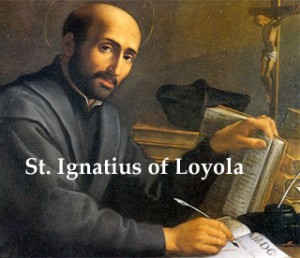 The Discernment of Spirits: Setting the Captives Free – Serves as an introduction to the Spiritual Exercises of St. Ignatius of Loyola
The Discernment of Spirits: Setting the Captives Free – Serves as an introduction to the Spiritual Exercises of St. Ignatius of Loyola
The 14 Rules for Discerning Spirits –
“The Different Movements Which Are Caused In The Soul”
as outlined by St. Ignatius of Loyola
can be found here
Father Timothy M. Gallagher, O.M.V., was ordained in 1979 as a member of the Oblates of the Virgin Mary, a religious community dedicated to retreats and spiritual formation according to the Spiritual Exercises of St. Ignatius. Â Fr. Gallagher is featured on the EWTN series “Living the Discerning Life: Â The Spiritual Teachings of St. Ignatius of Loyola”.Â
For more information on how to obtain copies of Fr. Gallaghers’s various books and audio which are available for purchase, please visit  his  website: www.frtimothygallagher.org
 For the other episodes in this series visit
Fr. Timothy Gallagher’s “Discerning Hearts†page
Tags: catholic, catholic podcast, catholic prayer, cathollc spirituality, discernment of spirits, Timothy Gallagher
This entry was posted on Wednesday, October 20th, 2010 at 9:50 pm
You can follow any responses to this entry through the RSS 2.0 feed.
Thank God for our Holy Father, Pope Benedict XVI, and his desire to teach us about the heritage contained in our faith. I love it now, because once again he is lifting up one of the truly gifted women mystics of the Church for all of us to learn from. I didn’t know much about her, until his teaching, but now…wow! What a story…I can’t wait to get to know her better! Blessed Angela, pray for us!
From the Pope Benedict’s Wednesday audience from vatican.va
Dear Brothers and Sisters,
Today I would like to speak to you about Blessed Angela of Foligno, a great medieval mystic who lived in the 13th century. People are usually fascinated by the consummate experience of union with God that she reached, but perhaps they give too little consideration to her first steps, her conversion and the long journey that led from her starting point, the “great fear of hell”, to her goal, total union with the Trinity. The first part of Angela’s life was certainly not that of a fervent disciple of the Lord. She was born into a well-off family in about 1248. Her father died and she was brought up in a somewhat superficial manner by her mother. She was introduced at a rather young age into the worldly circles of the town of Foligno, where she met a man whom she married at the age of 20 and to whom she bore children. Her life was so carefree that she was even contemptuous of the so-called “penitents”, who abounded in that period; they were people who, in order to follow Christ, sold their possessions and lived in prayer, fasting, in service to the Church and in charity.
Certain events, such as the violent earthquake in 1279, a hurricane, the endless war against Perugia and its harsh consequences, affected the life of Angela who little by little became aware of her sins, until she took a decisive step. In 1285 she called upon St Francis, who appeared to her in a vision and asked his advice on making a good general Confession. She then went to Confession with a Friar in San Feliciano. Three years later, on her path of conversion she reached another turning point: she was released from any emotional ties. In the space of a few months, her mother’s death was followed by the death of her husband and those of all her children. She therefore sold her possessions and in 1291 enrolled in the Third Order of St Francis. She died in Foligno on 4 January 1309.
The Book of Visions and Instructions of Blessed Angela of Foligno, in which is gathered the documentation on our Blessed, tells the story of this conversion and points out the necessary means: penance, humility and tribulation; and it recounts the steps, Angela’s successive experiences which began in 1285. Remembering them after she had experienced them, Angela then endeavoured to recount them through her Friar confessor, who faithfully transcribed them, seeking later to sort them into stages which he called “steps or mutations” but without managing to put them entirely in order (cf. Il Libro della beata Angela da Foligno, Cinisello Balsamo 1990, p. 51). This was because for Blessed Angela the experience of union meant the total involvement of both the spiritual and physical senses and she was left with only a “shadow” in her mind, as it were, of what she had “understood” during her ecstasies. “I truly heard these words”, she confessed after a mystical ecstasy, but it is in no way possible for me to know or tell of what I saw and understood, or of what he [God] showed me, although I would willingly reveal what I understood with the words that I heard, but it was an absolutely ineffable abyss”. Angela of Foligno presented her mystical “life”, without elaborating on it herself because these were divine illuminations that were communicated suddenly and unexpectedly to her soul. Her Friar confessor too had difficulty in reporting these events, “partly because of her great and wonderful reserve concerning the divine gifts” (ibid., p. 194). In addition to Angela’s difficulty in expressing her mystical experience was the difficulty her listeners found in understanding her. It was a situation which showed clearly that the one true Teacher, Jesus, dwells in the heart of every believer and wants to take total possession of it. So it was with Angela, who wrote to a spiritual son: “My son, if you were to see my heart you would be absolutely obliged to do everything God wants, because my heart is God’s heart and God’s heart is mine”. Here St Paul’s words ring out: “It is no longer I who live, but Christ who lives in me” (Gal 2: 20).
Let us then consider only a few “steps” of our Blessed’s rich spiritual journey. The first, in
fact, is an introduction: “It was the knowledge of sin”, as she explained, “after which my soul was deeply afraid of damnation; in this stage I shed bitter tears” (Il Libro della beata Angela da Foligno, p. 39). This “dread” of hell corresponds to the type of faith that Angela had at the time of her “conversion”; it was a faith still poor in charity, that is, in love of God. Repentance, the fear of hell and penance unfolded to Angela the prospect of the sorrowful “Way of the Cross”, which from the eighth to the 15th stages was to lead her to the “way of love”. Her Friar confessor recounted: “The faithful woman then told me: I have had this divine revelation: “after the things you have written, write that anyone who wishes to preserve grace must not lift the eyes of his soul from the Cross, either in the joy or in the sadness that I grant or permit him'” (ibid., p. 143). However, in this phase Angela “did not yet feel love”. She said: “The soul feels shame and bitterness and does not yet feel love but suffering” (ibid., p. 39), and is unrequited.
Angela felt she should give something to God in reparation for her sins, but slowly came to realize that she had nothing to give him, indeed, that she “was nothing” before him. She understood that it would not be her will to give her God’s love, for her will could give only her own “nothingness”, her “non-love”. As she was to say: only “true and pure love, that comes from God, is in the soul and ensures that one recognizes one’s own shortcomings and the divine goodness…. Such love brings the soul to Christ and it understands with certainty that in him no deception can be found or can exist. No particle of worldly love can be mingled with this love” (ibid., p. 124-125). This meant opening herself solely and totally to God’s love whose greatest expression is in Christ: “O my God” she prayed, “make me worthy of knowing the loftiest mystery that your most ardent and ineffable love brought about for our sake, together with the love of the Trinity, in other words the loftiest mystery of your most holy Incarnation…. O incomprehensible love! There is no greater love than this love that brought my God to become man in order to make me God” (ibid., p. 295). However, Angela’s heart always bore the wounds of sin; even after a good Confession she would find herself forgiven and yet still stricken by sin, free and yet conditioned by the past, absolved but in need of penance. And the thought of hell accompanied her too, for the greater the progress the soul made on the way of Christian perfection, the more convinced it is not only of being “unworthy” but also deserving of hell.
And so it was that on this mystical journey Angela understood the central reality in a profound way: what would save her from her “unworthiness” and from “deserving hell” would not be her “union with God” or her possession of the “truth” but Jesus Crucified, “his crucifixion for me”, his love.
In the eighth step, she said, “However, I did not yet understand whether my liberation from sins and from hell and conversion to penance was far greater, or his crucifixion for me” (ibid., n. 41). This was the precarious balance between love and suffering, that she felt throughout her arduous journey towards perfection. For this very reason she preferred to contemplate Christ Crucified, because in this vision she saw the perfect balance brought about. On the Cross was the man-God, in a supreme act of suffering which was a supreme act of love. In the third Instruction the Blessed insisted on this contemplation and declared: “The more perfectly and purely we see, the more perfectly and purely we love…. Therefore the more we see the God and man, Jesus Christ, the more we are transformed in him through love…. What I said of love… I also say of suffering: the more the soul contemplates the ineffable suffering of the God and man Jesus Christ the more sorrowful it becomes and is transformed through suffering” (ibid., p. 190-191). Thus, unifying herself with and transforming herself into the love and suffering of Christ Crucified, she was identifying herself with him. Angela’s conversion, which began from that Confession in 1285, was to reach maturity only when God’s forgiveness appeared to her soul as the freely given gift of the love of the Father, the source of love: “No one can make excuses”, she said, “because anyone can love God and he does not ask the soul for more than to love him, because he loves the soul and it is his love” (ibid., p. 76).On Angela’s spiritual journey the transition from conversion to mystical experience, from what can be expressed to the inexpressible, took place through the Crucified One. He is the “God-man of the Passion”, who became her “teacher of perfection”. The whole of her mystical experience, therefore, consisted in striving for a perfect “likeness” with him, through ever deeper and ever more radical purifications and transformations. Angela threw her whole self, body and soul, into this stupendous undertaking, never sparing h
erself of penance and suffering, from beginning to end, desiring to die with all the sorrows suffered by the God-man crucified in order to be totally transformed in him. “O children of God”, she recommended, “transform yourselves totally in the man-God who so loved you that he chose to die for you a most ignominious and all together unutterably painful death, and in the most painful and bitterest way. And this was solely for love of you, O man!” (ibid., p. 247). This identification also meant experiencing what Jesus himself experienced: poverty, contempt and sorrow, because, as she declared, “through temporal poverty the soul will find eternal riches; through contempt and shame it will obtain supreme honour and very great glory; through a little penance, made with pain and sorrow, it will possess with infinite sweetness and consolation the Supreme Good, Eternal God” (ibid., p. 293).
From conversion to mystic union with Christ Crucified, to the inexpressible. A very lofty journey, whose secret is constant prayer. “The more you pray”, she said, “the more illumined you will be and the more profoundly and intensely you will see the supreme Good, the supremely good Being; the more profoundly and intensely you see him, the more you will love him; the more you love him the more he will delight you; and the more he delights you, the better you will understand him and you will become capable of understanding him. You will then reach the fullness of light, for you will understand that you cannot understand” (ibid., p. 184).
Dear brothers and sisters, Blessed Angela’s life began with a worldly existence, rather remote from God. Yet her meeting with the figure of St Francis and, finally, her meeting with Christ Crucified reawakened her soul to the presence of God, for the reason that with God alone life becomes true life, because, in sorrow for sin, it becomes love and joy. And this is how Blessed Angela speaks to us. Today we all risk living as though God did not exist; he seems so distant from daily life. However, God has thousands of ways of his own for each one, to make himself present in the soul, to show that he exists and knows and loves me. And Blessed Angela wishes to make us attentive to these signs with which the Lord touches our soul, attentive to God’s presence, so as to learn the way with God and towards God, in communion with Christ Crucified. Let us pray the Lord that he make us attentive to the signs of his presence and that he teach us truly to live. Thank you.
Tags: Blessed Angela, catholic, catholic podcast, catholic prayer, catholic saints, cathollc spirituality, holy father, mystic, mystics of the church, pope benedict xvi, prayer, women of the middle ages
This entry was posted on Thursday, October 14th, 2010 at 1:46 pm
You can follow any responses to this entry through the RSS 2.0 feed.
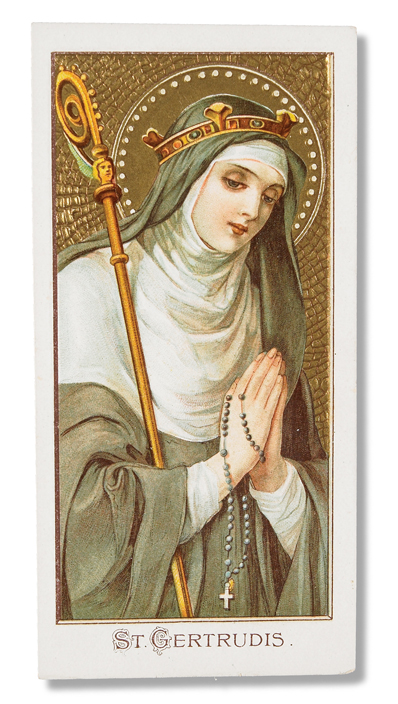
BENEDICT XVI GENERAL AUDIENCE (the entire text translated in English) from vatican.va
Dear Brothers and Sisters,
St Gertrude the Great, of whom I would like to talk to you today, brings us once again this week to the Monastery of Helfta, where several of the Latin-German masterpieces of religious literature were written by women. Gertrude belonged to this world. She is one of the most famous mystics, the only German woman to be called “Great”, because of her cultural and evangelical stature: her life and her thought had a unique impact on Christian spirituality. She was an exceptional woman, endowed with special natural talents and extraordinary gifts of grace, the most profound humility and ardent zeal for her neighbour’s salvation. She was in close communion with God both in contemplation and in her readiness to go to the help of those in need.
At Helfta, she measured herself systematically, so to speak, with her teacher, Matilda of Hackeborn, of whom I spoke at last Wednesday’s Audience. Gertrude came into contact with Matilda of Magdeburg, another medieval mystic and grew up under the wing of Abbess Gertrude, motherly, gentle and demanding. From these three sisters she drew precious experience and wisdom; she worked them into a synthesis of her own, continuing on her religious journey with boundless trust in the Lord. Gertrude expressed the riches of her spirituality not only in her monastic world, but also and above all in the biblical, liturgical, Patristic and Benedictine contexts, with a highly personal hallmark and great skill in communicating.
Gertrude was born on 6 January 1256, on the Feast of the Epiphany, but nothing is known of her parents nor of the place of her birth. Gertrude wrote that the L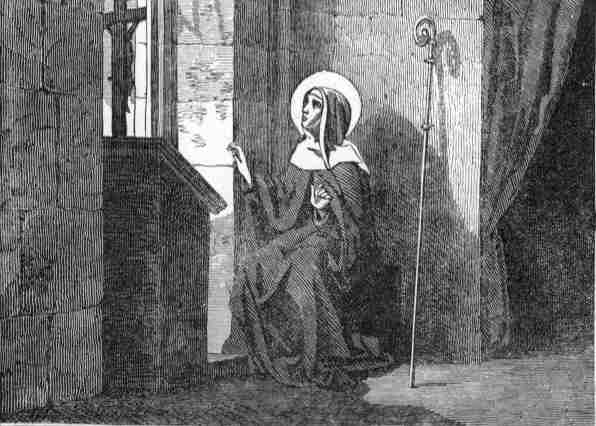 ord himself revealed to her the meaning of this first uprooting: “I have chosen you for my abode because I am pleased that all that is lovable in you is my work…. For this very reason I have distanced you from all your relatives, so that no one may love you for reasons of kinship and that I may be the sole cause of the affection you receive” (The Revelations, I, 16, Siena 1994, pp. 76-77).
ord himself revealed to her the meaning of this first uprooting: “I have chosen you for my abode because I am pleased that all that is lovable in you is my work…. For this very reason I have distanced you from all your relatives, so that no one may love you for reasons of kinship and that I may be the sole cause of the affection you receive” (The Revelations, I, 16, Siena 1994, pp. 76-77).
When she was five years old, in 1261, she entered the monastery for formation and education, a common practice in that period. Here she spent her whole life, the most important stages of which she herself points out. In her memoirs she recalls that the Lord equipped her in advance with forbearing patience and infinite mercy, forgetting the years of her childhood, adolescence and youth, which she spent, she wrote, “in such mental blindness that I would have been capable… of thinking, saying or doing without remorse everything I liked and wherever I could, had you not armed me in advance, with an inherent horror of evil and a natural inclination for good and with the external vigilance of others. “I would have behaved like a pagan… in spite of desiring you since childhood, that is since my fifth year of age, when I went to live in the Benedictine shrine of religion to be educated among your most devout friends” (ibid., II, 23, p. 140f.).
Gertrude was an extraordinary student, she learned everything that can be learned of the sciences of the trivium and quadrivium, the education of that time; she was fascinated by knowledge and threw herself into profane studies with zeal and tenacity, achieving scholastic successes beyond every expectation. If we know nothing of her origins, she herself tells us about her youthful passions: literature, music and song and the art of miniature painting captivated her. She had a strong, 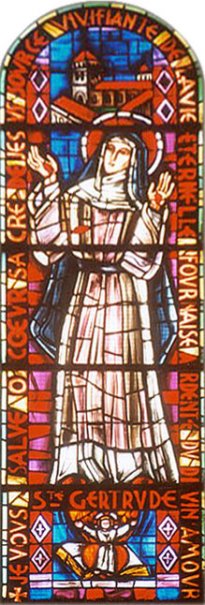 determined, ready and impulsive temperament. She often says that she was negligent; she recognizes her shortcomings and humbly asks forgiveness for them. She also humbly asks for advice and prayers for her conversion. Some features of her temperament and faults were to accompany her to the end of her life, so as to amaze certain people who wondered why the Lord had favoured her with such a special love.
determined, ready and impulsive temperament. She often says that she was negligent; she recognizes her shortcomings and humbly asks forgiveness for them. She also humbly asks for advice and prayers for her conversion. Some features of her temperament and faults were to accompany her to the end of her life, so as to amaze certain people who wondered why the Lord had favoured her with such a special love.
From being a student she moved on to dedicate herself totally to God in monastic life, and for 20 years nothing exceptional occurred: study and prayer were her main activities. Because of her gifts she shone out among the sisters; she was tenacious in consolidating her culture in various fields.
Nevertheless during Advent of 1280 she began to feel disgusted with all this and realized the vanity of it all. On 27 January 1281, a few days before the Feast of the Purification of the Virgin, towards the hour of Compline in the evening, the Lord with his illumination dispelled her deep anxiety. With gentle sweetness he calmed the distress that anguished her, a torment that Gertrude saw even as a gift of God, “to pull down that tower of vanity and curiosity which, although I had both the name and habit of a nun alas I had continued to build with my pride, so that at least in this manner I might find the way for you to show me your salvation” (ibid., II, p. 87). She had a vision of a young man who, in order to guide her through the tangle of thorns that surrounded her soul, took her by the hand. In that hand Gertrude recognized “the precious traces of the wounds that abrogated all the acts of accusation of our enemies” (ibid., II, 1, p. 89), and thus recognized the One who saved us with his Blood on the Cross: Jesus.
From that moment her life of intimate communion with the Lord was intensified, especially in the most important liturgical seasons Advent-Christmas, Lent-Easter, the feasts of Our Lady even when illness prevented her from going to the choir. This was the same liturgical humus as that of Matilda, her teacher; but Gertrude describes it with simpler, more linear images, symbols and terms that are more realistic and her references to the Bible, to the Fathers and to the Benedictine world are more direct.
Her biographer points out two directions of what we might describe as her own particular “conversion“: in study, with the radical passage from profane, humanistic studies to the study of theology, and in monastic observance, with the passage from a life that she describes as negligent, to the life of intense, mystical prayer, with exceptional missionary zeal. The Lord who had chosen her from her mother’s womb and who since her childhood had made her partake of the banquet of monastic life, called her again with his grace “from external things to inner life and from earthly occupations to love for spiritual things”. Gertrude understood that she was remote from him, in the region of unlikeness, as she said with Augustine; that she had dedicated herself with excessive greed to liberal studies, to human wisdom, overlooking spiritual knowledge, depriving herself of the taste for true wisdom; she was then led to the mountain of contemplation where she cast off her former self to be reclothed in the new. “From a grammarian she became a theologian, with the unflagging and attentive reading of all the sacred books that she could lay her hands on or contrive to obtain. She filled her heart with the most useful and sweet sayings of Sacred Scripture. Thus she was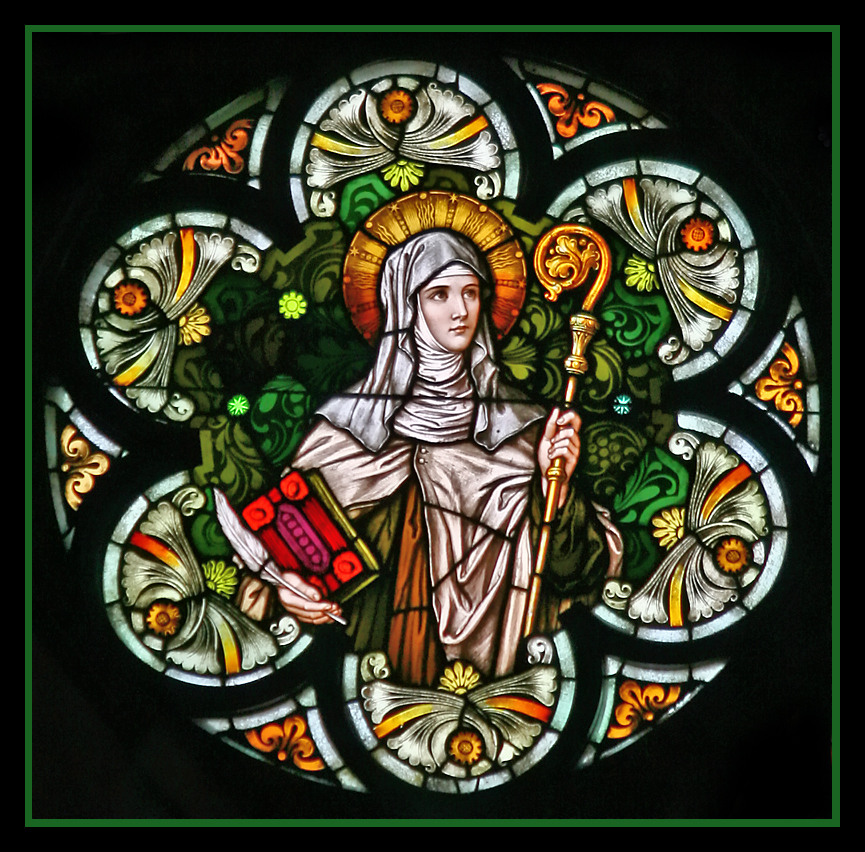 always ready with some inspired and edifying word to satisfy those who came to consult her while having at her fingertips the most suitable scriptural texts to refute any erroneous opinion and silence her opponents” (ibid., I, 1, p. 25).
always ready with some inspired and edifying word to satisfy those who came to consult her while having at her fingertips the most suitable scriptural texts to refute any erroneous opinion and silence her opponents” (ibid., I, 1, p. 25).
Gertrude transformed all this into an apostolate: she devoted herself to writing and popularizing the truth of faith with clarity and simplicity, with grace and persuasion, serving the Church faithfully and lovingly so as to be helpful to and appreciated by theologians and devout people.
Little of her intense activity has come down to us, partly because of the events that led to the destruction of the Monastery of Helfta. In addition to The Herald of Divine Love and The Revelations, we still have her Spiritual Exercises, a rare jewel of mystical spiritual literature.
In religious observance our Saint was “a firm pillar… a very powerful champion of justice and truth” (ibid., I, 1, p. 26), her biographer says. By her words and example she kindled great fervour in other people. She added to the prayers and penances of the monastic rule others with such devotion and such trusting abandonment in God that she inspired in those who met her an awareness of being in the Lord’s presence. In fact, God made her understand that he had called her to be an instrument of his grace. Gertrude herself felt unworthy of this immense divine treasure, and confesses that she had not safeguarded it or made enough of it. She exclaimed: “Alas! If you had given me to remember you, unworthy as I am, by even only a straw, I would have viewed it with greater respect and reverence that I have had for all your gifts!” (ibid., II, 5, p. 100). Yet, in recognizing her poverty and worthlessness she adhered to God’s will, “because”, she said, “I have so little profited from your graces that I cannot resolve to believe that they were lavished upon me solely for my own use, since no one can thwart your eternal wisdom. Therefore, O Giver of every good thing who has freely lavished upon me gifts so undeserved, in order that, in reading this, the heart of at least one of your friends may be moved at the thought that zeal for souls has induced you to leave such a priceless gem for so long in the abominable mud of my heart” (ibid., II, 5, p. 100f.).
Two favours in particular were dearer to her than any other, as Gertrude herself writes: “The stigmata of your salvation-bearing wounds which you impressed upon me, as it were, like a valuable necklaces, in my heart, and the profound and salutary wound of love with which you marked it. “You flooded me with your gifts, of such beatitude that even were I to live for 1,000 years with no consolation neither interior nor exterior the memory of them would suffice to comfort me, to enlighten me, to fill me with gratitude. 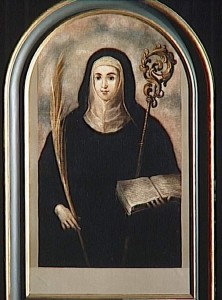 Further, you wished to introduce me into the inestimable intimacy of your friendship by opening to me in various ways that most noble sacrarium of your Divine Being which is your Divine Heart…. To this accumulation of benefits you added that of giving me as Advocate the Most Holy Virgin Mary, your Mother, and often recommended me to her affection, just as the most faithful of bridegrooms would recommend his beloved bride to his own mother” (ibid., II, 23, p. 145).
Further, you wished to introduce me into the inestimable intimacy of your friendship by opening to me in various ways that most noble sacrarium of your Divine Being which is your Divine Heart…. To this accumulation of benefits you added that of giving me as Advocate the Most Holy Virgin Mary, your Mother, and often recommended me to her affection, just as the most faithful of bridegrooms would recommend his beloved bride to his own mother” (ibid., II, 23, p. 145).
Looking forward to never-ending communion, she ended her earthly life on 17 November 1301 or 1302, at the age of about 46. In the seventh Exercise, that of preparation for death, St Gertrude wrote: “O Jesus, you who are immensely dear to me, be with me always, so that my heart may stay with you and that your love may endure with me with no possibility of division; and bless my passing, so that my spirit, freed from the bonds of the flesh, may immediately find rest in you. Amen” (Spiritual Exercises, Milan 2006, p. 148).
It seems obvious to me that these are not only things of the past, of history; rather St Gertrude’s life lives on as a lesson of Christian life, of an upright path, and shows us that the heart of a happy life, of a true life, is friendship with the Lord Jesus. And this friendship is learned in love for Sacred Scripture, in love for the Liturgy, in profound faith, in love for Mary, so as to be ever more truly acquainted with God himself and hence with true happiness, which is the goal of our life. Many thanks.
Tags: benedict xvi, catholic, catholic podcast, catholic prayer, cathollc spirituality, contemplation, famous mystics, heart, love, mystic, mystic of the Church, mystical experiences, sacred scripture, st gertrude, truth, women of the middle ages
This entry was posted on Wednesday, October 6th, 2010 at 6:47 pm
You can follow any responses to this entry through the RSS 2.0 feed.
Describing the exemplary life of a 13th-century German nun, Pope Benedict XVI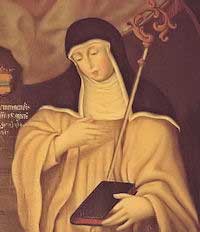 stressed the importance of liturgy in building a close relationship with God.
stressed the importance of liturgy in building a close relationship with God.
VATICAN CITY, 29 SEP 2010 Â Pope Benedict’s General Audience vatican.va
Dear Brothers and Sisters,
Today I want to talk to you about St Matilda of Hackeborn, one of the great figures of the convent of Helfta, who lived in the 13th century. Her sister, St Gertrude the Great, tells of the special graces that God granted to St Matilda in the sixth book of Liber Specialis Gratiae (Book of Special Grace), which states : “What we have written is very little in comparison with what we have omitted. We are publishing these things solely for the glory of God and the usefulness of our neighbour, for it would seem wrong to us to keep quiet about the many graces that Matilda received from God, not so much for herself, in our opinion, but for us and for those who will come after us” (Mechthild von Hackeborn, Liber specialis gratiae, vi, 1).
This work was written by St Gertrude and by another sister of Helfta and has a unique story. At the age of 50, Matilda went through a grave spiritual crisis, as well as physical suffering. In this condition she confided to two of her sisters who were friends the special graces with which God had guided her since childhood. However, she did not know that they were writing it all down. When she found out she was deeply upset and distressed. However, the Lord reassured her, making her realize that all that had been written was for the glory of God and for the benefit of her neighbour (cf. ibid., II, 25; V, 20). This work, therefore, is the principal source to refer to for information on the life and spirituality of our Saint.
With her we are introduced into the family of Baron von Hackeborn, one of the noblest, richest and most powerful barons of Thuringia, related to the Emperor Frederick ii, and we enter the convent of Helfta in the most glorious period of its history. The Baron had already given one daughter to the convent, Gertrude of Hackeborn (1231/1232 – 1291/1292). She was gifted with an outstanding personality. She was Abbess for 40 years, capable of giving the spirituality of the convent a particular hallmark and of bringing it to an extraordinary flourishing as the centre of mysticism and culture, a school for scientific and theological training. Gertrude offered the nuns an intellectual training of a high standard that enabled them to cultivate a spirituality founded on Sacred Scripture, on the Liturgy, on the Patristic tradition, on the Cistercian Rule and spirituality, with a particular love for St Bernard of Clairvaux and William of Saint-Thierry. She was a real teacher, exemplary in all things, in evangelical radicalism and in apostolic zeal. Matilda, from childhood, accepted and enjoyed the spiritual and cultural atmosphere created by her sister, later giving it her own personal hallmark.
Matilda was born in 1241 or 1242 in the Castle of Helfta. She was the Baron’s third daughter. When she was seven she went with her mother to visit her sister Gertrude in the convent of Rodersdorf. She was so enchanted by this environment that she ardently desired to belong to it. She entered as a schoolgirl and in 1258 became a nun at the convent, which in the meantime had moved to Helfta, to the property of the Hackeborns. She was distinguished by her humility, her fervour, her friendliness, the clarity and the innocence of her life and by the familiarity and intensity with which she lived her relationship with God, the Virgin and the Saints. She was endowed with lofty natural and spiritual qualities such as knowledge, intelligence, familiarity with the humanities and a marvellously sweet voice: everything suited her to being a true treasure for the convent from every point of view (ibid, Proem.). Thus when “God’s nightingale”, as she was called, was still very young she became the principal of the convent’s school, choir mistress and novice mistress, offices that she fulfilled with talent and unflagging zeal, not only for the benefit of the nuns but for anyone who wanted to draw on her wisdom and goodness.
Illumined by the divine gift of mystic contemplation, Matilda wrote many prayers. She was a teacher of faithful doctrine and deep humility, a counsellor, comforter and guide in discernment. We read: “she distributed doctrine in an abundance never previously seen at the convent, and alas, we are rather afraid that nothing like it will ever be seen again. The sisters would cluster round her to hear the word of God, as if she were a preacher. “She was the refuge and consoler of all and, by a unique gift of God, was endowed with the grace of being able to reveal freely the secrets of the heart of each one. Many people, not only in the convent but also outsiders, religious and lay people, who came from afar, testified that this holy virgin had freed them from their afflictions and that they had never known such comfort as they found near her. “Furthermore, she composed and taught so many prayers that if they were gathered together they would make a book larger than a Psalter” (ibid., VI, 1).
In 1261 a five year old girl came to the convent. Her name was Gertrude: She was entrusted to the care of Matilda, just 20 years of age, who taught her and guided her in the spiritual life until she not only made her into an excellent disciple but also her confidant. In 1271 or 1272, Matilda of Magdeburg also entered the convent. So it was that this place took in four great women two Gertrudes and two Matildas the glory of German monasticism. During her long life which she spent in the convent, Matilda was afflicted with continuous and intense bouts of suffering, to which she added the very harsh penances chosen for the conversion of sinners. In this manner she participated in the Lord’s Passion until the end of her life (cf. ibid., VI, 2).
Prayer and contemplation were the life-giving humus of her existence: her revelations, her teachings, her service to her neighbour, her journey in faith and in love have their root and their context here.
In the first book of the work,Liber Specialis Gratiae, the nuns wrote down Matilda’s confidences pronounced on the Feasts of the Lord, the Saints and, especially, of the Blessed Virgin. This Saint had a striking capacity for living the various elements of the Liturgy, even the simplest, and bringing it into the daily life of the convent. Some of her images, expressions and applications are at times distant from our sensibility today, but, if we were to consider monastic life and her task as mistress and choir mistress, we should grasp her rare ability as a teacher and educator who, starting from the Liturgy, helped her sisters to live intensely every moment of monastic life.
Matilda gave an emphasis in liturgical prayer to the canonical hours, to the celebrations of Holy Mass and, especially, to Holy Communion. Here she was often rapt in ecstasy in profound intimacy with the Lord in his most ardent and sweetest Heart, carrying on a marvellous conversation in which she asked for inner illumination, while interceding in a special way for her community and her sisters. At the centre are the mysteries of Christ which the Virgin Mary constantly recommends to people so that they may walk on the path of holiness: “If you want true holiness, be close to my Son; he is holiness itself that sanctifies all things” (ibid., I, 40). The whole world, the Church, benefactors and sinners were present in her intimacy with God. For her, Heaven and earth were united.
Her visions, her teachings, the events of her life are described in words reminiscent of liturgical and biblical language. In this way it is possible to comprehend her deep knowledge of Sacred Scripture, which was her daily bread. She had constant recourse to the Scriptures, making the most of the biblical texts read in the Liturgy, and drawing from them symbols, terms, countryside, images and famous figures. She had a special love for the Gospel: “The words of the Gospel were a marvellous nourishment for her and in her heart stirred feelings of such sweetness that, because of her enthusiasm, she was often unable to finish reading it…. The way in which she read those words was so fervent that it inspired devotion in everyone. “Thus when she was singing in the choir, she was completely absorbed in God, uplifted by such ardour that she sometimes expressed her feelings in gestures…. “On other occasions, since she was rapt in ecstasy, she did not hear those who were calling or touching her and came back with difficulty to the reality of the things around her” (ibid., VI, 1). In one of her visions, Jesus himself recommended the Gospel to her; opening the wound in his most gentle Heart, he said to her: “consider the immensity of my love: if you want to know it well, nowhere will you find it more clearly expressed than in the Gospel. No one has ever heard expressed stronger or more tender sentiments than these:Â “As my father has loved me, so I have loved you (Jn 15: 9)'” (ibid., I, 22).
Dear friends, personal and liturgical prayer, especially the Liturgy of the Hours and Holy Mass are at the root of St Matilda of Hackeborn’s spiritual experience. In letting herself be guided by Sacred Scripture and nourished by the Bread of the Eucharist, she followed a path of close union with the Lord, ever in full fidelity to the Church. This is also a strong invitation to us to intensify our friendship with the Lord, especially through daily prayer and attentive, faithful and active participation in Holy Mass. The Liturgy is a great school of spirituality.
Her disciple Gertrude gives a vivid pictures of St Matilda of Hackeborn’s last moments. They were very difficult but illumined by the presence of the Blessed Trinity, of the Lord, of the Virgin Mary and of all the Saints, even Gertrude’s sister by blood. When the time came in which the Lord chose to gather her to him, she asked him let her live longer in suffering for the salvation of souls, and Jesus was pleased with this further sign of her love.
Matilda was 58 years old. The last leg of her journey was marked by eight years of serious illness. Her work and the fame of her holiness spread far and wide. When her time came, “the God of majesty… the one delight of the soul that loves him… sang to her:Â Venite vos, benedicti Patris mei…. Venite, o voi che siete i benedetti dal Padre mio, venite a ricevere il regno… and he united her with his glory” (ibid., VI, 8).
May St Matilda of Hackeborn commend us to the Sacred Heart of Jesus and to the Virgin Mary. She invites us to praise the Son with the Heart of the Mother, and to praise Mary with the Heart of the Son: “I greet you, O most deeply venerated Virgin, in that sweetest of dews which from the Heart of the Blessed Trinity spread within you; I greet you in the glory and joy in which you now rejoice for ever, you who were chosen in preference to all the creatures of the earth and of Heaven even before the world’s creation! Amen” (ibid., I, 45).
Tags: benedict xvi, catholic, catholic podcast, catholic prayer, cathollc spirituality, cistercians, discernment, holy father, holy virgin, matilda, mystic, mystic of the Church, patristic tradition, st gertrude, women of the middle ages
This entry was posted on Sunday, October 3rd, 2010 at 12:44 am
You can follow any responses to this entry through the RSS 2.0 feed.
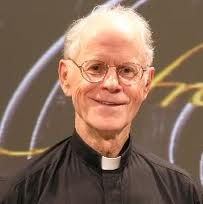 While my heart sings for joy because I know he must be with Lord in heaven, it’s also so sad knowing the Church Miltant no longer has one of it’s greatest contemplative teachers in its temporal midst. Fr. Thomas Dubay died, September 26, 2010. Fr. Dubay led me to St. Teresa of Avila. His work on “Fire Within” and all the programs he gave us on EWTN were instrumental in my spiritual growth. In those early days, he was like having a distant spiritual director who guided me, as well as the rest of us, toward a deeper relationship with Christ.
While my heart sings for joy because I know he must be with Lord in heaven, it’s also so sad knowing the Church Miltant no longer has one of it’s greatest contemplative teachers in its temporal midst. Fr. Thomas Dubay died, September 26, 2010. Fr. Dubay led me to St. Teresa of Avila. His work on “Fire Within” and all the programs he gave us on EWTN were instrumental in my spiritual growth. In those early days, he was like having a distant spiritual director who guided me, as well as the rest of us, toward a deeper relationship with Christ.
He told me once, “Kris, the best theology books are the lives of the saints; you study them and you won’t be led astray.”  Fr. Thomas Dubay, in a very real way, helped inspire the work of this blog and it’s mission.
I’m leaving now to light a candle for Fr. Dubay at our church…it doesn’t seem like much given the fact he was such an important part of my spiritual growth, but then again I think it would make him happy knowing I was offering that “prayer” from the depths of my heart. I can’t wait to meet him in person one day. Fr. Thomas Dubay, pray for us.
Tags: catholic, catholic podcast, catholic prayer, cathollc spirituality, Church Miltant, conversion, spiritual director, st. john of the cross, st. teresa of avila, thomas dubay
This entry was posted on Monday, September 27th, 2010 at 6:18 pm
You can follow any responses to this entry through the RSS 2.0 feed.
One of the great modern day conversion stories…the Hahn’s, Scott and Kimberly! They have had a profound affect on the McGregor hearts and continue to point the discerning hearts of so many more brothers and sisters towards the depths of Truth. Don’t forget…conversion is a verb, not a noun. It’s an action that continues every moment of every day as we journey home. Join the wonderful Marcus Grodi, with a story that never grows old…
Tags: brothers and sisters, catholic, catholic podcast, catholic prayer, cathollc spirituality, conversion, Kimberly Hahn, marcus grodi
This entry was posted on Monday, September 27th, 2010 at 5:39 pm
You can follow any responses to this entry through the RSS 2.0 feed.
Wow…as a parent there could be nothing more difficult then the death of your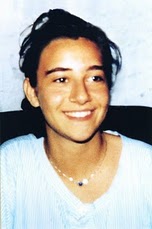 child, but then imagine being there for their beatification in Rome! That has been the experience of Ruggero and Maria Teresa Badano.
child, but then imagine being there for their beatification in Rome! That has been the experience of Ruggero and Maria Teresa Badano.
The life and witness of Blessed Chiara Luce Badano is one not just for youth, but for us all!!!!
            Â
Maria Grazia Magrini, vice-postulator of Chiara Badano’s cause for canonization, told ZENIT: “She put Jesus in the first place. She called him ‘my spouse.'”Â
As a young girl, she liked to sing, dance, play tennis and skate. She loved the mountains and the sea. “She also tried to go to Mass every day,” said Magrini.
One day, at age 17, while playing tennis the adolescent felt an acute pain. Her mother recalled: “She returned home and was very pale. She went upstairs.”Â
The mother asked her: “Why did you come back, Chiara?” The youth explained, “Because during the match I felt such an sharp pain in my back that I dropped the racquet.”
The pain worsened. Doctors soon discovered bone cancer. As the disease progressed, Badano faced repeated hospitalizations and increasing pain. She often repeated, “For you, Jesus. If you wish it, so do I!”Â
Her mother still remembers when she came home after the first session of chemotherapy. She did not want to talk. Maria Teresa recalled: “I looked at her and I saw the expression on her face, all the struggle she was combating within herself to say her ‘yes’ to Jesus.” After 25 minutes, she said to her mother “now you can talk.”
Going to meet Jesus
Chiara underwent surgery, which was unsuccessful; from that moment she lost the use of her legs.Â
According to her vice postulator, this young athlete, notwithstanding the very painful moment, exclaimed: “If I had to choose between walking or going to paradise, I wouldn’t hesitate, I’d choose paradise.”
At that time her friendship with Chiara Lubich, founder of the Focolare movement, who decided to call the youth Chiara “Luce” Badano, became very close.
She spent several months in agony, preparing for her encounter with Jesus. “The most beautiful moments were during the last summer,” said her friend, Chicca. “She was motionless in her bed,” she recalled.Â
Magrini highlighted Chiara’s attitude: “She didn’t cry, didn’t lament, she looked at the image of Jesus.”
Chicca recalled how Chiara wished to prepare her own funeral: the songs of the Mass, the dress and hairdo: Everything was for her a celebration. The friend recalled, “She told me she wanted to be buried in a white dress, as a bride that goes to meet Jesus.”
Chiara made one last exhortation to her mother: “When you dress me, you must repeat three times: Now Chiara is seeing Jesus.” Chiara also asked that the cornea of her eyes be donated to two youths.Â
She died on Oct. 7, 1990. Her last words to her mother were: “Be happy because I’m happy.” – Zenit
Tags: catholic, catholic podcast, catholic prayer, cathollc spirituality, chiara badano, focolare movement
This entry was posted on Sunday, September 26th, 2010 at 6:02 pm
You can follow any responses to this entry through the RSS 2.0 feed.
A shining example of how reason and science can lead to faith. Dr. Kevin Vost is a cradle Catholic, who fell into aethism at the age of 17. He would stay there for over 2 decades, until gradually through reasoned enlightenment (showered with God’s grace) the fallacy in aethistic philosophy was revealed and the glory of real Truth became known. Wonderful read…the journey really can be made from the head to the heart, just ask Dr. Kevin Vost!
Catholic, who fell into aethism at the age of 17. He would stay there for over 2 decades, until gradually through reasoned enlightenment (showered with God’s grace) the fallacy in aethistic philosophy was revealed and the glory of real Truth became known. Wonderful read…the journey really can be made from the head to the heart, just ask Dr. Kevin Vost!
[powerpress]
Pick up a copy of Kevin’s book
Be sure to visit Dr.  Kevin Vost’s website
Tags: aethism, catholic, catholic podcast, catholic prayer, catholicism, cathollc spirituality, Dr. Kevin Vost, faith, heart, kevin gast, Kevin Vost, osv, our sunday visitor, philosophy, psychology, science
This entry was posted on Wednesday, September 22nd, 2010 at 11:59 pm
You can follow any responses to this entry through the RSS 2.0 feed.
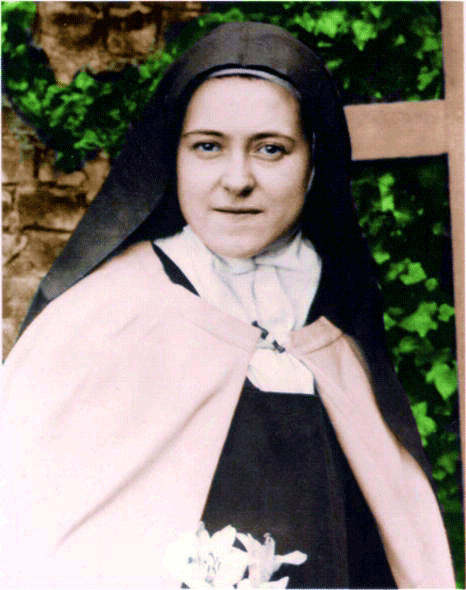 OK, everyone lets put the Little Flower to work (it brings her great joy, don’tcha know)! Today begins the novena to St. Therese of Lisieux. Her feast day is Oct. 1. She’s only merely huge… why she’s only slightly enormous…barely gigantic in all the little ways…she’s Our Little Flower.  A Doctor of the Church, who’s little way leads to the greatest love.
OK, everyone lets put the Little Flower to work (it brings her great joy, don’tcha know)! Today begins the novena to St. Therese of Lisieux. Her feast day is Oct. 1. She’s only merely huge… why she’s only slightly enormous…barely gigantic in all the little ways…she’s Our Little Flower.  A Doctor of the Church, who’s little way leads to the greatest love.
Teresa of Elkhorn, (Teresa Monaghen of course) leads us in our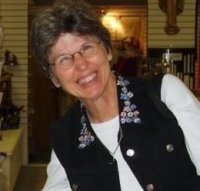 Novena to St. Therese.
Novena to St. Therese.
Tags: catholic, catholic podcast, catholic prayer, cathollc spirituality, little flower, novena to st therese, saints, st. therese, teresa monaghen
This entry was posted on Wednesday, September 22nd, 2010 at 4:11 pm
You can follow any responses to this entry through the RSS 2.0 feed.
The truth had more value than security and prestige. He stressed a life of virtue. His life would emphasize that both the habits of knowledge, along with  the habits of  virtue, lead to the birth of the habit of right judgement in our lives. Boy now there is the key isn’t it. We can have knowledge…we can have virtue…but are the two truly united, “married” so to speak, to bring about in our hearts and our minds, right judgement. Look around the world today, is there the practice of  “right judgement’? Sound complicated? Not really, it’s at the heart of true and proper discernment. And that’s why Blessed John Henry Newman is a vital saint for today’s world.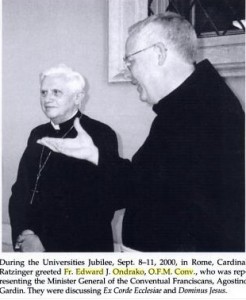
One of the best books I’ve ever read on the teachings of Blessed John Henry Cardinal Newman was “Progressive Illumination”. And one my favorite discussions on his life was with Fr. Edward Ondrako OFM Conv. What’s great about Fr. Ondrako is that not only thinks “Newman”, he prays “Newman. And he shows us how it brings us all to the heart of Christ.
Take a listen to the conversation Bruce and I had with Fr. Ondrako on the Spirit Morning Show
Â
Â
A wonderful book on Blessed John Henry Newman is “Progressive Illumination” by Fr. Ondrako
Tags: catholic, catholic podcast, catholic prayer, cathollc spirituality, conscience, discernment, john henry cardinal newman, john henry newman
This entry was posted on Sunday, September 19th, 2010 at 7:57 am
You can follow any responses to this entry through the RSS 2.0 feed.
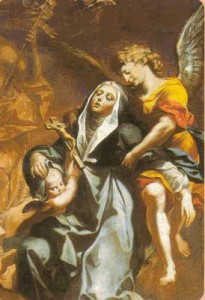 There’s somethng that happens when you not only read and recite but when you also hear…when you listen deeply and profoundly. The private revelation which was given to St. Bridget of Sweden that day in the chapel of the church of St. Paul’s Outside the Walls in Rome over 600 years ago is still one of the most poignant and compelling moments in all mystical experiences. The Church has deemed this worthy of belief to the extent that it can edify one’s faith rather than hurt; that indeed if practiced and nurtured it could open the heart for an outpouring of grace.
There’s somethng that happens when you not only read and recite but when you also hear…when you listen deeply and profoundly. The private revelation which was given to St. Bridget of Sweden that day in the chapel of the church of St. Paul’s Outside the Walls in Rome over 600 years ago is still one of the most poignant and compelling moments in all mystical experiences. The Church has deemed this worthy of belief to the extent that it can edify one’s faith rather than hurt; that indeed if practiced and nurtured it could open the heart for an outpouring of grace.
The “Pieta Prayers” of St. Bridget of Sweden can be a challenging practice in today’s world. To help foster a greater understanding and devotion to Our Lord’s Passion, Discerning Hearts has produced a MP3 Downloadable audio which we hope will assist you in some way.
[powerpress = “Devotionals-Prayers”]Â (featuring Bruce McGregor and Denise Wharton)
For the complete texts, promises and ecclesial advisements click here
Tags: 15 prayers of st bridget, catholic, catholic podcast, catholic prayer, cathollc spirituality, devotion, Discerning Hearts, hope, mp3 downloadable, mystic, mystic of the Church, mystical experiences, pieta, prayers, private revelation, st bridget of sweden, Sweden, women of the middle ages
This entry was posted on Saturday, September 18th, 2010 at 5:12 pm
You can follow any responses to this entry through the RSS 2.0 feed.
Dr. Patricia Cooney Hathaway concentrates on helping women understand the relationship between 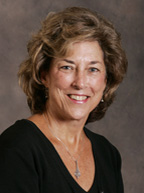 faith and human experience during the middle years within the context of the whole life cycle. This book is EXCELLENT! She explores the wrenching and puzzling questions women in their middle years need to ask: Who am I? Who am I with? Where am I going in terms of a life plan? What aids or blocks my growth? Is God a personal God who is invested in my life? Do I have a personal destiny related to God? What is the meaning of suffering? What is my fate after death?  Drawing from the Mystical Doctors of the Church, Dr. Hathaway offeres an ou
faith and human experience during the middle years within the context of the whole life cycle. This book is EXCELLENT! She explores the wrenching and puzzling questions women in their middle years need to ask: Who am I? Who am I with? Where am I going in terms of a life plan? What aids or blocks my growth? Is God a personal God who is invested in my life? Do I have a personal destiny related to God? What is the meaning of suffering? What is my fate after death?  Drawing from the Mystical Doctors of the Church, Dr. Hathaway offeres an ou tstanding spiritual resource for women.
tstanding spiritual resource for women.
[powerpress]
Click here to pick up a copy of Patricia’s book
Tags: catholic, catholic podcast, catholic prayer, cathollc spirituality, Cooney Hathaway, human experience, Patricia Cooney Hathaway, women
This entry was posted on Tuesday, September 14th, 2010 at 8:56 pm
You can follow any responses to this entry through the RSS 2.0 feed.
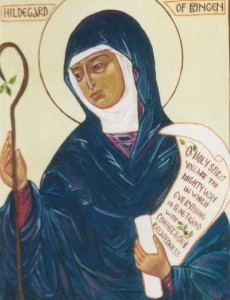 Once again the Holy Father, Pope Benedict XVI speaks of the importance of St. Hildegard of Bingen.
Once again the Holy Father, Pope Benedict XVI speaks of the importance of St. Hildegard of Bingen.
Vatican City – Pope Benedict’s General Audience from Vatican.va
Dear Brothers and Sisters, Today I would like to take up and continue my Reflection on St Hildegard of Bingen, an important female figure of the Middle Ages who was distinguished for her spiritual wisdom and the holiness of her life. Hildegard’s mystical visions resemble those of the Old Testament prophets: expressing herself in the cultural and religious categories of her time, she interpreted the Sacred Scriptures in the light of God, applying them to the various circumstances of life. Thus all those who heard her felt the need to live a consistent and committed Christian lifestyle. In a letter to St Bernard the mystic from the Rhineland confesses: “The vision fascinates my whole being: I do not see with the eyes of the body but it appears to me in the spirit of the mysteries…. I recognize the deep meaning of what is expounded on in the Psalter, in the Gospels and in other books, which have been shown to me in the vision. This vision burns like a flame in my breast and in my soul and teaches me to understand the text profoundly” (Epistolarium pars prima I-XC: CCCM 91). Hildegard’s mystical visions have a rich theological content. They refer to the principal events of salvation history, and use a language for the most part poetic and symbolic. For example, in her best known work entitled Scivias, that is, “You know the ways” she sums up in 35 visions the events of the history of salvation from the creation of the world to the end of time. With the characteristic traits of feminine sensitivity, Hildegard develops at the very heart of her work the theme of the mysterious marriage between God and humanity that is brought about in the Incarnation. On the tree of the Cross take place the nuptials of the Son of God with the Church, his Bride, filled with grace and the ability to give new children to God, in the love of the Holy Spirit (cf. Visio tertia: PL 197, 453c).
From these brief references we already see that theology too can receive a special contribution from women because they are able to talk about God and the mysteries of faith using their own particular intelligence and sensitivity. I therefore encourage all those who carry out this service to do it with a profound ecclesial spirit, nourishing their own reflection with prayer and looking to the great riches, not yet fully explored, of the medieval mystic tradition, especially that represented by luminous models such as Hildegard of Bingen.
The Rhenish mystic is also the author of other writings, two of which are particularly important since, like Scivias, they record her mystical visions: they are the Liber vitae meritorum (Book of the merits of life) and the Liber divinorum operum (Book of the divine works), also called De operatione Dei. In the former she describes a unique and powerful vision of God who gives life to the cosmos with his power and his light. Hildegard stresses the deep relationship that exists between man and God and reminds us that the whole creation, of which man is the summit, receives life from the Trinity. The work is centred on the relationship between virtue and vice, which is why human beings must face the daily challenge of vice that distances them on their way towards God and of virtue that benefits them. The invitation is to distance themselves from evil in order to glorify God and, after a virtuous existence, enter the life that consists “wholly of joy”. In her second work that many consider her masterpiece she once again describes creation in its relationship with God and the centrality of the human being, expressing a strong Christo-centrism with a biblical-Patristic flavour. The Saint, who presents five visions inspired by the Prologue of the Gospel according to St John, cites the words of the Son to the Father: “The whole task that you wanted and entrusted to me I have carried out successfully, and so here I am in you and you in me and we are one” (Pars III, Visio X: PL 197, 1025a). Finally, in other writings Hildegard manifests the versatility of interests and cultural vivacity of the female monasteries of the Middle Ages, in a manner contrary to the prejudices which still weighed on that period. Hildegard took an interest in medicine and in the natural sciences as well as in music, since she was endowed with artistic talent. Thus she composed hymns, antiphons and songs, gathered under the title: Symphonia Harmoniae Caelestium Revelationum (Symphony of the Harmony of Heavenly Revelations), that were performed joyously in her monasteries, spreading an atmosphere of tranquillity and that have also come down to us. For her, the entire creation is a symphony of the Holy Spirit who is in himself joy and jubilation.
The popularity that surrounded Hildegard impelled many people to seek her advice. It is for this reason that we have so many of her letters at our disposal. Many male and female monastic communities turned to her, as well as Bishops and Abbots. And many of her answers still apply for us. For instance, Hildegard wrote these words to a community of women religious: “The spiritual life must be tended with great dedication. At first the effort is burdensome because it demands the renunciation of caprices of the pleasures of the flesh and of other such things. But if she lets herself be enthralled by holiness a holy soul will find even contempt for the world sweet and lovable. All that is needed is to take care that the soul does not shrivel” (E. Gronau, Hildegard. Vita di una donna profetica alle origini dell’età moderna, Milan 1996, p. 402). And when the Emperor Frederic Barbarossa caused a schism in the Church by supporting at least three anti-popes against Alexander iii, the legitimate Pope, Hildegard did not hesitate, inspired by her visions, to remind him that even he, the Emperor, was subject to God’s judgement. With fearlessness, a feature of every prophet, she wrote to the Emperor these words as spoken by God: “You will be sorry for this wicked conduct of the godless who despise me! Listen, O King, if you wish to live! Otherwise my sword will pierce you!” (ibid., p. 412). With the spiritual authority with which she was endowed, in the last years of her life Hildegard set out on journeys, despite her advanced age and the uncomfortable conditions of travel, in order to speak to the people of God. They all listened willingly, even when she spoke severely: they considered her a messenger sent by God. She called above all the monastic communities and the clergy to a life in conformity with their vocation. In a special way Hildegard countered the movement of German cátari (Cathars). They cátari means literally “pure” advocated a radical reform of the Church, especially to combat the abuses of the clergy.
She harshly reprimanded them for seeking to subvert the very nature of the Church, reminding them that a true renewal of the ecclesial community is obtained with a sincere spirit of repentance and a demanding process of conversion, rather than with a change of structures. This is a message that we should never forget. Let us always invoke the Holy Spirit, so that he may inspire in the Church holy and courageous women, like St Hildegard of Bingen, who, developing the gifts they have received from God, make their own special and valuable contribution to the spiritual development of our communities and of the Church in our time.
Tags: catholic, catholic podcast, catholic prayer, cathollc spirituality, Church, courageous women, Hildegard of Bingen, holy spirit, mysteries, mystic of the Church, mystics, pope benedict, pope benedict xvi, st hildegard of bingen, women, women of the middle ages
This entry was posted on Wednesday, September 8th, 2010 at 4:08 pm
You can follow any responses to this entry through the RSS 2.0 feed.
A marvelous work that takes all the grand imagery of the Book of Revelation and bring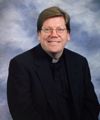 s it into our aching hearts today. Fr. Richard Veras allows the symbols of Revelation to stand as the inspired work of God and helps us to see the why, as well the when of it’s message. Many readers will be familiar with Fr. Veras as a frequent contributor to Magnifcat magazine. With this new work, those readers, as well as new ones, will not be disappointed.
s it into our aching hearts today. Fr. Richard Veras allows the symbols of Revelation to stand as the inspired work of God and helps us to see the why, as well the when of it’s message. Many readers will be familiar with Fr. Veras as a frequent contributor to Magnifcat magazine. With this new work, those readers, as well as new ones, will not be disappointed.
Click here for more information on Fr. Veras’ book
[powerpress]
Tags: apocalyptic book, book of revelation, catholic, catholic podcast, catholic prayer, cathollc spirituality, hearts, richard veras, servant books, work
This entry was posted on Tuesday, September 7th, 2010 at 9:45 am
You can follow any responses to this entry through the RSS 2.0 feed.


